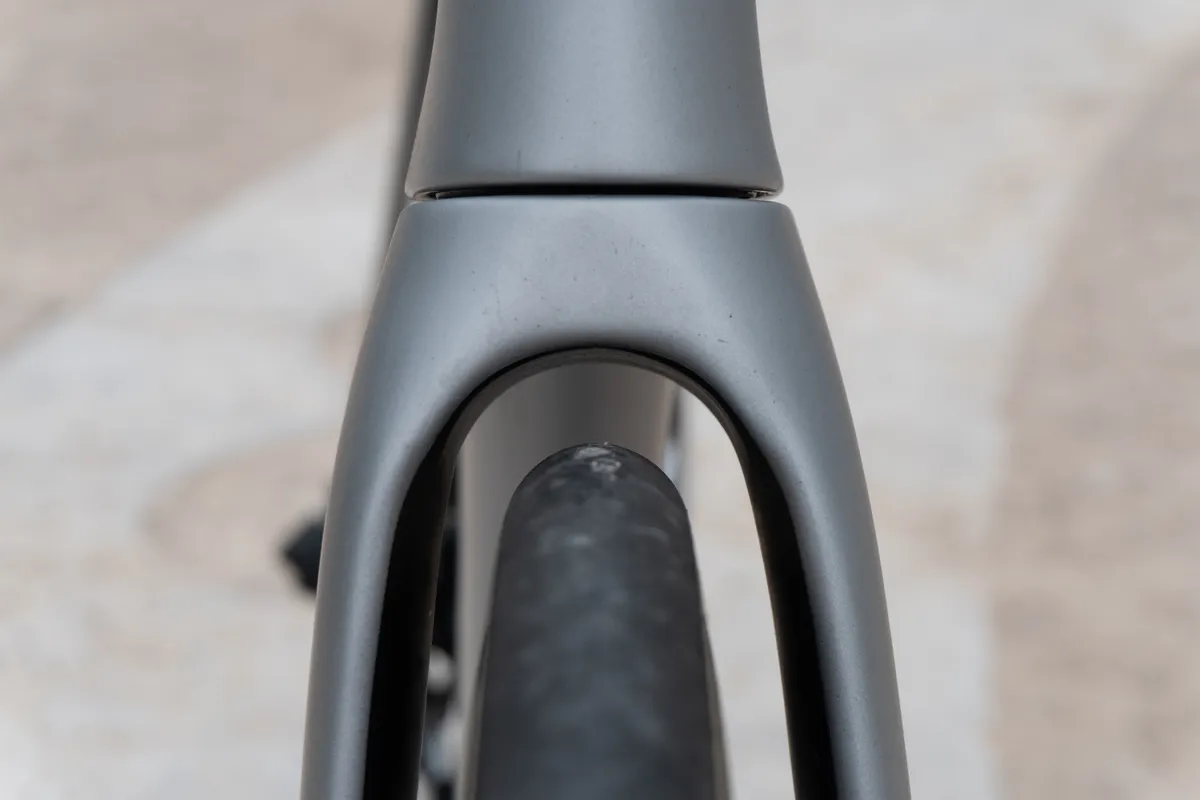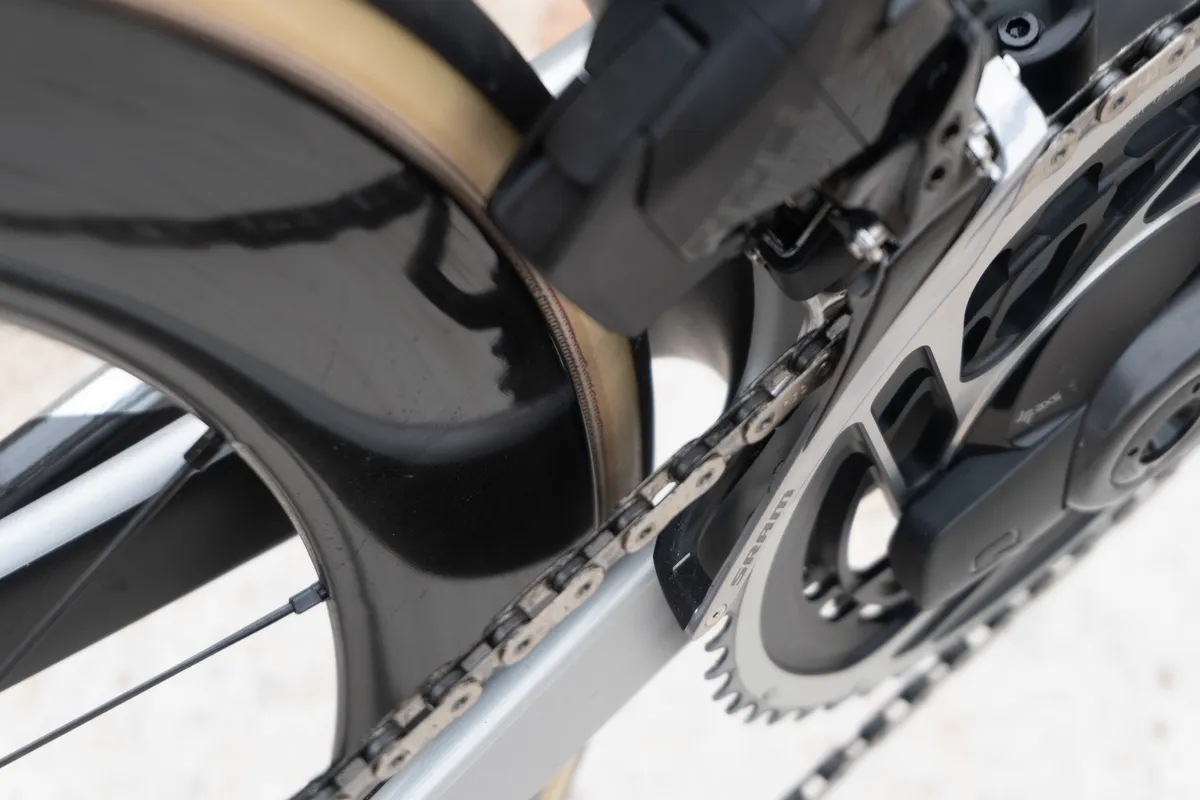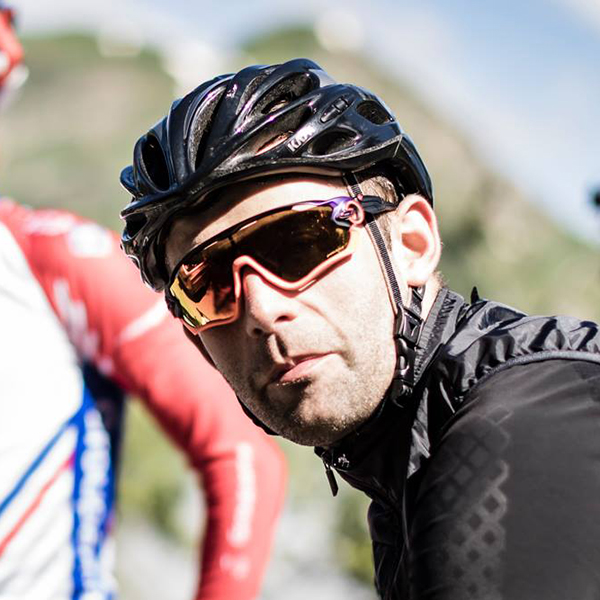When Trek launched the latest (seventh) version of the Madone SLR, it turned heads thanks to its radical rethink of the seat tube / top tube junction.
The American brand called it IsoFlow, removing the previous compliance-improving IsoSpeed system entirely, with the intention of improving aerodynamics and saving a little weight.
Meanwhile, the rest of the Madone saw an aero overhaul – there’s a straighter top tube, deeper profiles around the head tube and bottom bracket to fill the UCI’s so-called ‘compensation zones’, plus a remodelled integrated bar-stem that’s said to help the rider improve their aerodynamics.
It all sounds pretty enticing to a racer or a speed-obsessed sportive challenger, and the Madone has proven to be a bike worthy of its place at the top table of aero-optimised race machines.
A couple of curiosities aside – issues that you could argue should be remedied in a bike whose asking price is well in excess of £10,000 – it’s a pro-level bike in every respect.
Trek Madone SLR 9 eTap (2023) spec details
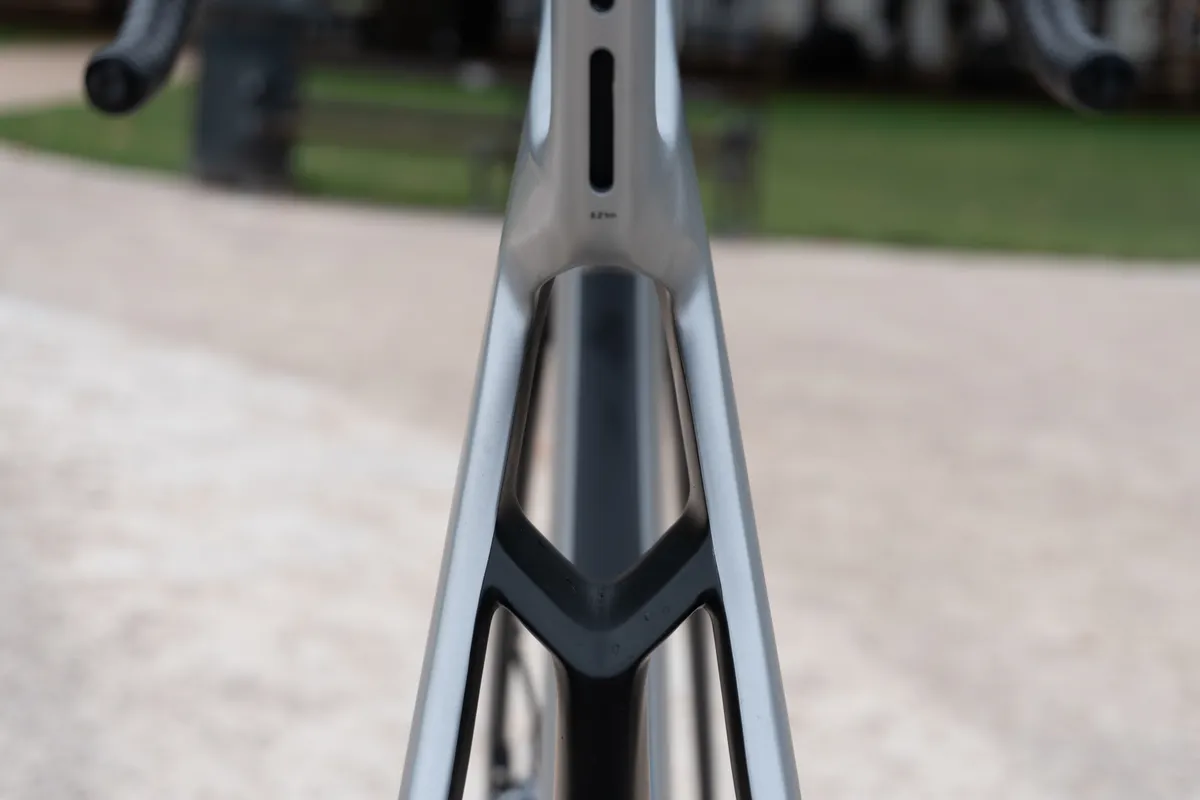
The Madone has been Trek’s foremost race bike for many years. First seeing Tour de France action in the early 2000s, it started life as a lightweight climbing machine, before transitioning into an aero bike in 2015.
That aero overhaul also took many of the lessons learned from Trek’s comfort-oriented race bike, the Domane, and the lightweight Emonda, with the brand integrating its IsoSpeed technology in the top tube / seatstay junction in one of the most aggressively distinctive aero race bikes in the pro peloton.
But that design had its drawbacks. Although retained for a 2020 refresh of the Madone platform, the IsoSpeed decouplers were seen as unnecessarily complicated compared to other, simpler competitor tech (alongside the rise of road disc brakes and the increased tyre clearance they offer), while it added weight, too.
In fact, Trek said pro race mechanics would often simply set the decouplers to the stiffest setting for their riders, and leave it there.
So, with the unoriginal brief to make the Madone “lighter and faster, as always”, and bearing in mind the years of pro rider and mechanic feedback, the bike has seen an overhaul that waves goodbye to IsoSpeed and welcomes IsoFlow, which is said to improve aero performance and save some of the weight IsoSpeed was adding.
The result is that with a rider atop it, the new Trek Madone is claimed to be 19 watts more efficient at 45kph.
According to Trek, that can save you 60 seconds over what would have previously been an hour's ride, and you’ll still save 59 seconds at 35kph, and 58 seconds at 25kph.
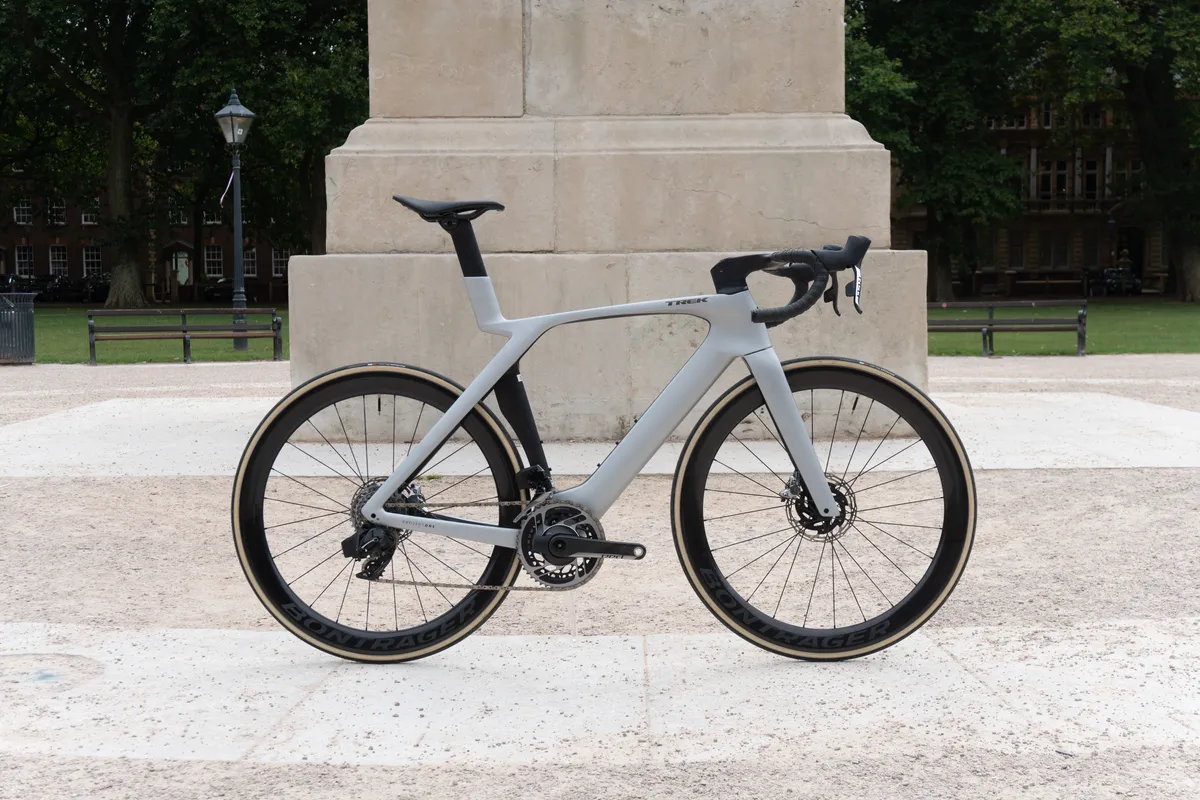
Not all of that can be attributed to the IsoFlow system, though. The frame tubing has seen a refresh of its Kammtail-inspired design.
Gone is much of the curvature of the top tube, for instance, and the UCI’s compensation zones – the zones in which each UCI-regulated maximal tube cross-section intersects – have been filled in somewhat, in a trend we’ve seen across a few of the latest aero bike releases, including the new Scott Foil RC and Cervélo S5.
The new aero bars are also claimed to account for half of the aero and weight savings alone, enabling the rider to more naturally and comfortably access a more optimised riding position, thanks in part to the narrower hood position.
The new integration shaves 150g from the overall weight of the bike, with the other 150g being dropped from the rest of the frame.
The frame itself is crafted using Trek’s top-of-the-line 800 Series OCLV carbon, which you get on any specification of the new seventh-generation Madone SLR.
In the size large (56cm) on test, the Madone SLR 9 eTap tips the scales at 7.29kg – that’s without any dressings, including pedals, bottle cages and the out-front Bontrager Blendr head unit mount (which wasn’t available at the time of the test, but which every purchaser will receive with their Madone).
Compared to other top-spec aero road bikes, that’s just shy of Scott’s 7.22kg claimed weight for its Foil RC Ultimate, and is likely to be comparable with Cervelo’s S5, which Simon von Bromley has tested at 8.2kg dressed in SRAM Force eTap.
Trek Madone SLR 9 eTap (2023) geometry
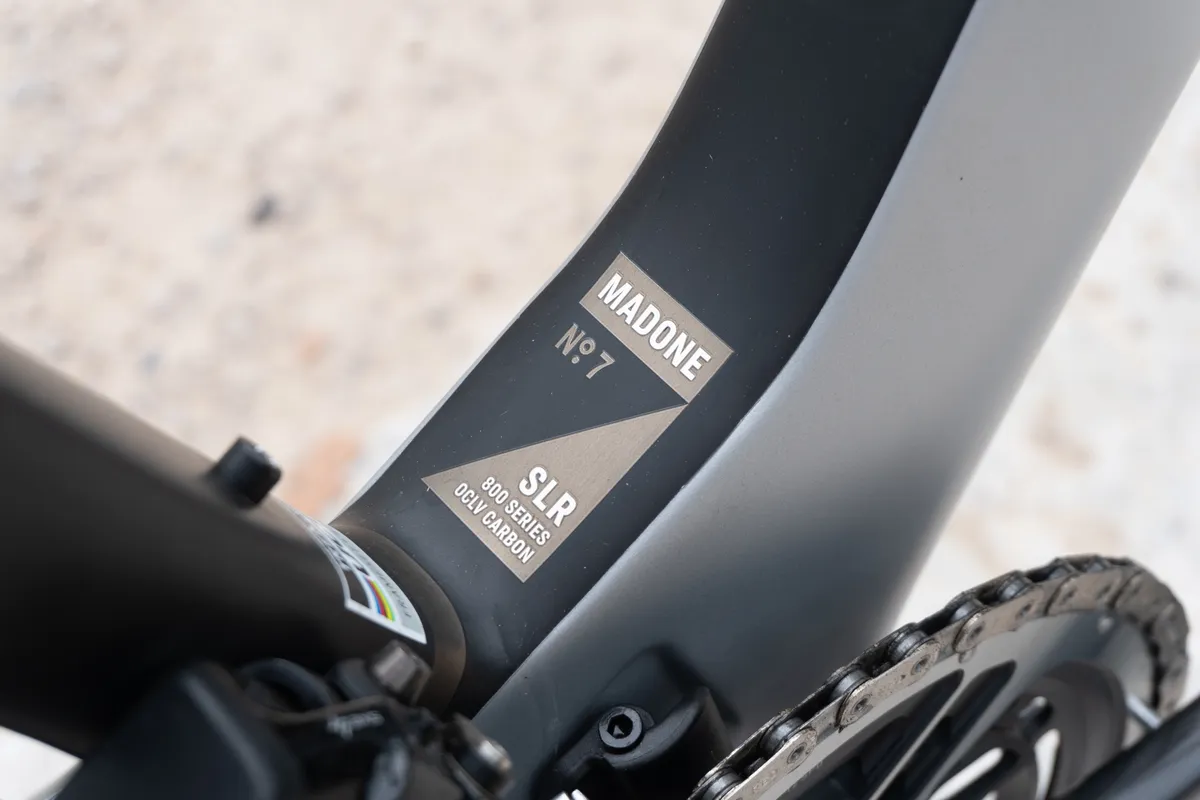
One of the notable choices Trek made with the new Madone SLR is to drop the choice of the pro-oriented H1 and more relaxed H2 geometry options, opting instead for the H1.5 geometry that sits midway between the two – and is already used on the latest Emonda SLR.
For Trek, this streamlines the manufacturing process somewhat (and probably saves some cost along the way), but for the rider it makes choosing a Madone simpler too.
Given the race-focus of the Madone SLR, it’s unsurprising to find a compact wheelbase that stays under 100cm until you get to an XXL (60cm) sized frame.
A shortened reach – Trek has cut 20mm from the previous Madone SLR’s figures – combines with a progressively steepening head tube angle through the size range to produce direct and sharp handling through the bars.
| Frame size (cm) | 47 | 50 | 52 | 54 | 56 | 58 | 60 | 62 |
|---|---|---|---|---|---|---|---|---|
| Seat tube (cm) | 42.4 | 45.3 | 48.3 | 49.6 | 52.5 | 55.3 | 57.3 | 59.3 |
| Seat tube angle (degrees) | 74.6 | 74.6 | 74.2 | 73.7 | 73.3 | 73 | 72.8 | 72.5 |
| Head tube (cm) | 10 | 11.1 | 12.1 | 13.1 | 15.1 | 17.1 | 19.1 | 21.1 |
| Head tube angle (degrees) | 72.1 | 72.1 | 72.8 | 73 | 73.5 | 73.8 | 73.9 | 73.9 |
| Effective top tube (cm) | 51.2 | 52.1 | 53.4 | 54.3 | 55.9 | 57.4 | 58.6 | 59.8 |
| Bottom bracket drop (cm) | 7.2 | 7.2 | 7.2 | 7 | 7 | 6.8 | 6.8 | 6.8 |
| Chainstay length (cm) | 41 | 41 | 41 | 41 | 41 | 41.1 | 41.1 | 41.2 |
| Fork offset (cm) | 4.5 | 4.5 | 4.5 | 4.5 | 4 | 4 | 4 | 4 |
| Trail (cm) | 6.8 | 6.2 | 5.8 | 5.6 | 5.8 | 5.7 | 5.6 | 5.6 |
| Wheelbase (cm) | 97.2 | 97.4 | 97.7 | 98.1 | 98.3 | 99.2 | 100.1 | 101 |
| Standover height (cm) | 69.2 | 71.1 | 73.2 | 74.4 | 76.8 | 79.3 | 81.1 | 82.9 |
| Reach (cm) | 37.3 | 37.8 | 38.3 | 38.6 | 39.1 | 39.6 | 39.9 | 40.3 |
| Stack (cm) | 50.7 | 52.1 | 53.3 | 54.1 | 56.3 | 58.1 | 60.1 | 62 |
| Stem length (mm) | 80 | 90 | 90 | 90 | 100 | 100 | 110 | 110 |
| Saddle rail height minimum (w/short mast, cm) | 55 | 58 | 61 | 63.5 | 66.5 | 68.5 | 70.5 | 73 |
| Saddle rail height maximum (w/short mast, cm) | 62 | 65 | 68 | 70.5 | 73 | 75.5 | 77.5 | 80.5 |
| Saddle rail height minimum (w/tall mast, cm) | 58.5 | 61.5 | 64.5 | 67 | 70 | 72 | 74 | 76.5 |
| Saddle rail height maximum (w/tall mast, cm) | 65.5 | 68.5 | 71.5 | 74 | 76.5 | 79 | 81 | 84 |
Trek Madone SLR 9 eTap (2023) ride impressions
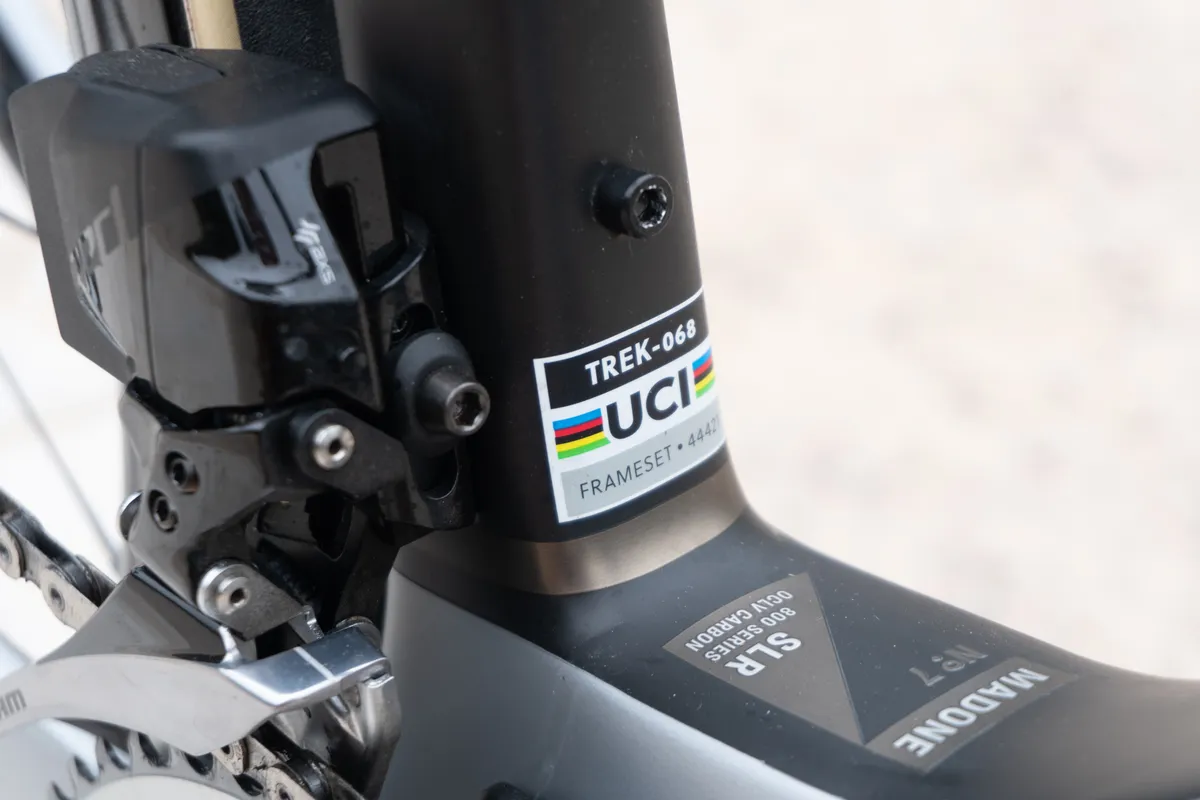
On the road, the Madone’s geometry translates as you might expect. The Madone SLR is sharp as a tack and incredibly easy to tip into corners.
If you know your corner, it’s a simple case of sighting your line, spotting the apex and gently manipulating the bars to bring the steering angle you need.
Despite being a fast-handling bike, the Madone SLR doesn’t hide any unwanted tricks up its sleeve. Its responses are almost immediately predictable.
With the benefit of a 40km recce ride to dial in my fit and to acclimatise to the naturally low front end, my subsequent rides felt immediately familiar, and confidence-inspiring.
There’s an unerring sense of speed. The Madone SLR is impressively rigid around the bottom bracket and through the chainstays, and is a joy to take by the scruff of the neck and stamp on the pedals.
Out of the saddle, it easily whips from side to side, with no hint of excess weight higher up the frame as the bike tilts. When you get up towards 30kph and beyond, the Madone SLR holds its speed impressively too, and is tangibly faster than my own reference point Canyon Ultimate all-rounder road bike with aero wheels.
All this is to say, the Madone SLR is likely to appeal to budding racers (with deep pockets – a Shimano 105 R7150 Di2 groupset-equipped SLR 6 will set you back a cool £6,850 / €7,699 / $7,999 / AU$11,399) who don’t want to feel like their steed is on a knife-edge when taking on their local crit or road-racing circuit.
But if there’s one noticeable tendency, it’s a slight sensitivity to crosswinds.
I live in a relatively windy area on the border of Bath & North East Somerset and Wiltshire in the UK, and found gusts can unsettle the Madone SLR a little, drawing me off-line a few times unexpectedly.
I suspect this is down partly to the slightly V-shaped Bontrager Aeolus rims (I’ll come on to these), but the bike as a whole is visibly aero-profiled and truncated tubes can mitigate directly oblique crosswinds only so much.
Moving on, and although the Madone SLR isn’t designed to supersede the Emonda as the brand’s lead climbing bike, I found it to climb very well, especially on longer, steadier ascents, as well as steep rises where a 30- to 60-second effort is required. The frame’s stiffness works a charm, while the Aeolus wheels roll smoothly and efficiently.
Exposed to something steeper (we’re talking in the region of 10 per cent gradients and above) for a prolonged period of time – something you’ll more likely find in mountainous areas – I suspect most riders might prefer a lighter alternative. But that's the case with most aero bikes and, across a range of terrain, the Madone SLR would most likely win out for pure pace.
A word on IsoFlow
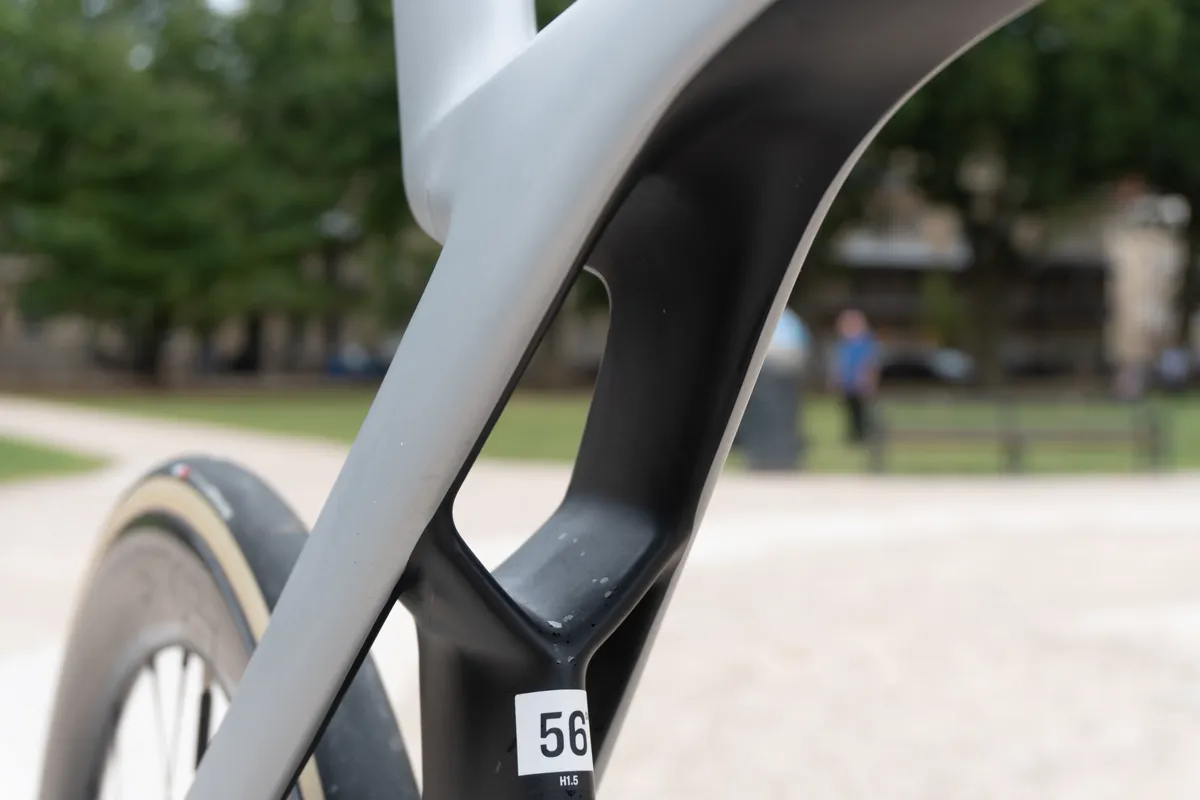
For the media buzz IsoFlow received when it first broke cover at the 2022 Critérium du Dauphiné, plus the arguably mixed response it’s received since, the new tech isn’t nearly as disruptive as one might expect.
It has the dual intention of improving aerodynamics by accelerating the airflow through the turbulent wake of the bike and its rider, while maintaining the comfort afforded by IsoSpeed on its stiffest setting in a simpler, weight-saving fashion.
What’s struck me most, however, is that you simply don’t notice it while riding.
There’s no doubt that the Madone SLR is a fast aero bike. Probably, one of the best aero road bikes out there. It’s not harsh either, even if it no longer blurs the lines with the comfort-led Domane.
The previous-generation Madone earned a reputation for outstanding comfort that helped it win ‘best superbike’ in our annual Bike of the Year test in 2019. Here, road buzz levels are kept well in check with this latest version, even if occasionally you can be shaken out of a slumber if you find yourself rolling along a typical UK road and encounter an all-too-common broken road surface.
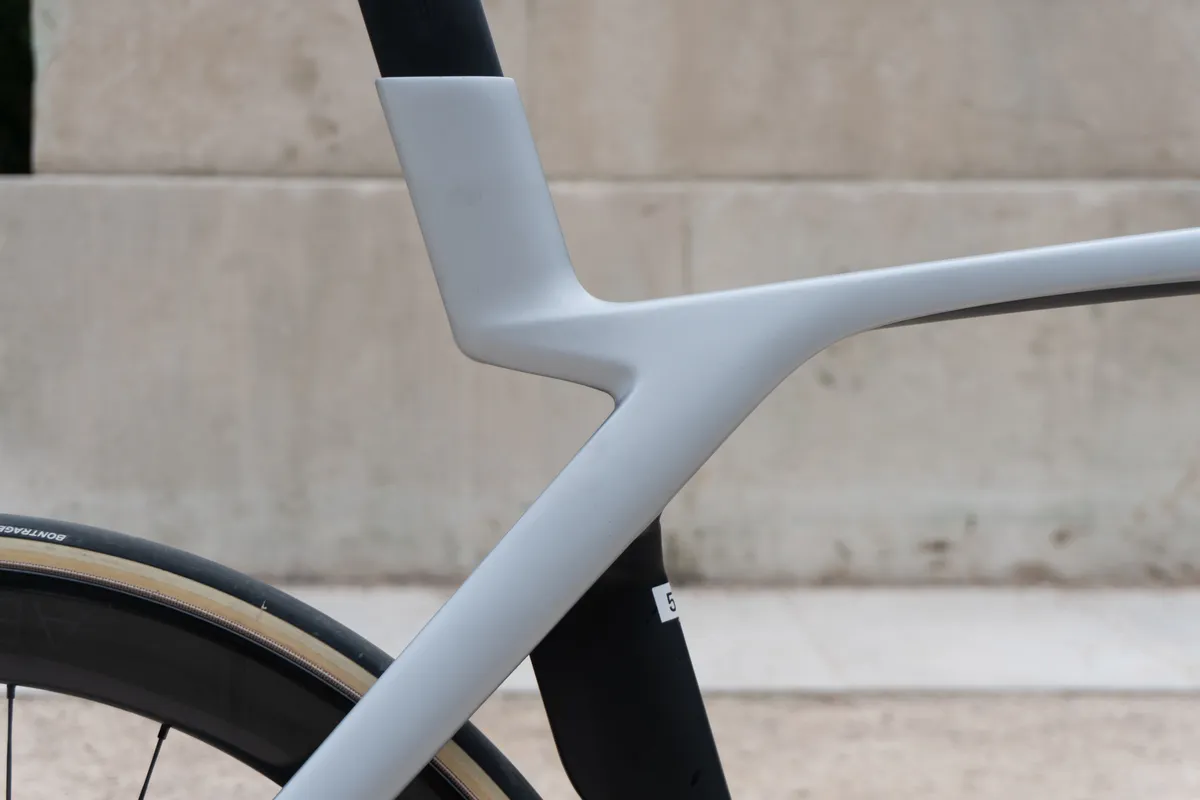
The looks of the IsoFlow system are very much a case of 'love-it-or-hate-it'. I’m a fan of the aesthetic, while I think any fresh thinking around how to design a bike with the restrictions the UCI places on such innovation should be applauded.
Anecdotally, I’ve only received admiring comments about the overall look of the bike, from friends and strangers alike.
However, most importantly, it should be considered in the view of what Trek was trying to achieve with the new Madone: more aero, less weight, less complication.
On that front, it’s claimed to improve aero efficiency (unfortunately BikeRadar hasn’t yet got access to its own wind tunnel to empirically test this), the frame is said to be around 150g lighter if you ignore the lighter cockpit, and IsoFlow is certainly simpler in the sense that there are fewer parts to set up, and things to adjust and maintain.
Trek Madone SLR 9 eTap (2023) finishing kit
Integrated Madone handlebar
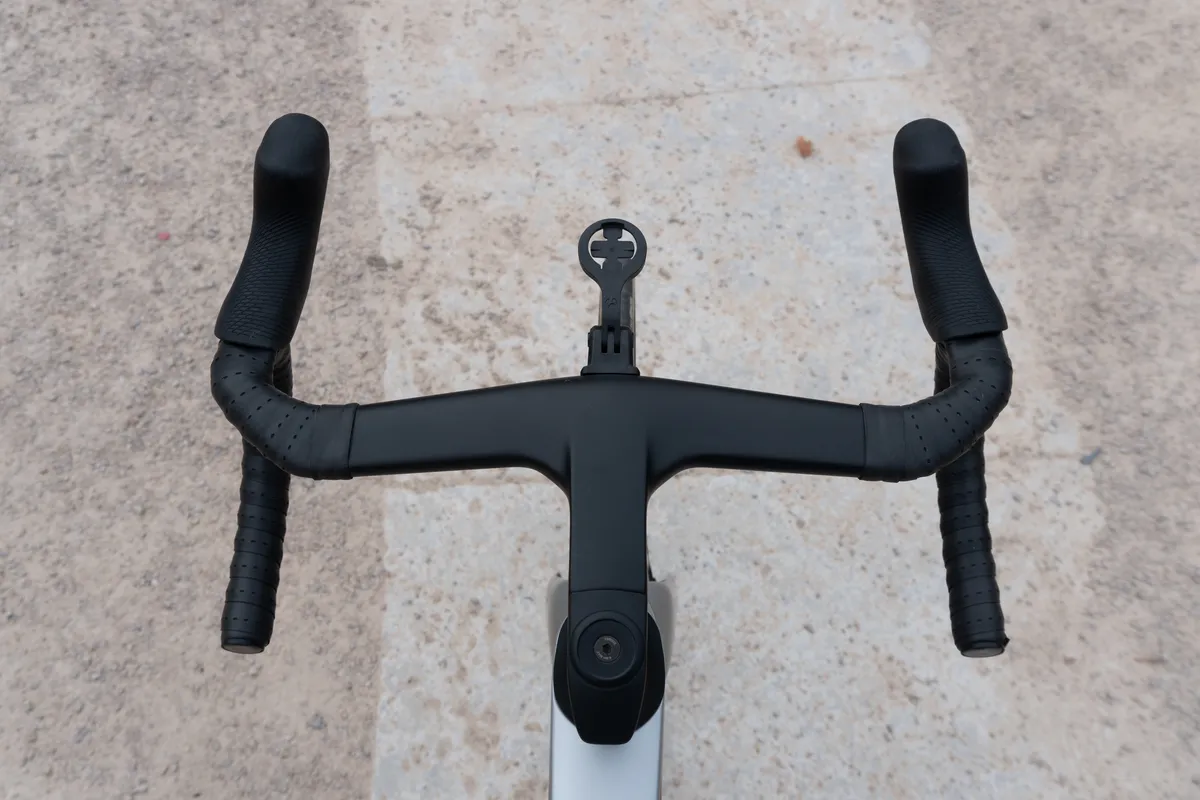
I’m impressed by the dual-width Madone integrated handlebar. The bar flares by 3cm from the hoods to the drops, with the intention to bring a more stable platform when riding in the drops and on descents (when you’re more likely to be there), but something a little more tucked in and aero when up-top.
Although my personal preference would have been to have a model with a longer reach – I would love to have experimented with a Madone bar featuring a 110 or even a 120mm stem length – I found the 100mm model fitted as standard to my 56cm test bike with its 42mm drop width and 39cm hood width a comfortable place to be.
The good news is that, although an alternative Madone-spec handlebar wasn’t available for the test period, Trek has confirmed purchasers will be able to dial in their fit with any of the 11 handlebar options it offers at point of purchase, at no extra cost, when ordering the bike through Trek’s Project One system.
And if all else fails, you could swap in any 1-1/8in stem – with a handlebar to match – to get your perfect front-end setup. That’s thanks to the availability of a different headset top cap designed for this purpose, although you’ll miss out on the Madone’s stock integration.
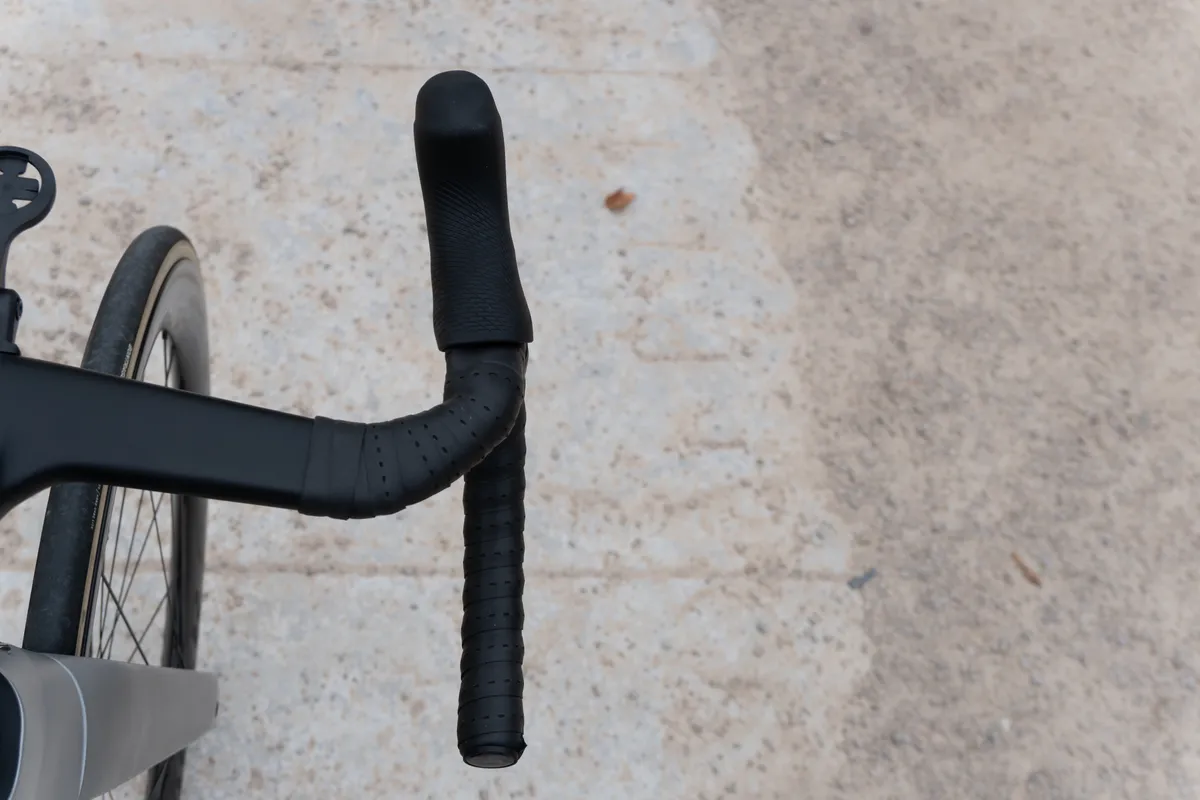
The overall shape of the integrated Madone bar is excellent. It allows you to rest your palms in comfort on the flattened tops when you’re climbing or just want a rest from being racy, while the flared design makes transitioning from hoods to drops and back up again very easy.
This is the first time I’ve ridden a bar designed in such a way on an out-and-out aero bike: the Scott Foil RC Pro I rode at launch has a traditionally profiled bar without flared drops, for example. It’s proven an instant hit, enabling me to quickly switch riding style without worrying about snagging my hand on the way down… or up.
Arguably, the flared drops might compromise my ultimate aero efficiency compared to narrower ones, but when I’m there I’m more comfortable and able to focus on delivering power through the pedals. As a rider who constantly needs to reconcile his cycling aspirations with a day job, that really matters.
Integrated cable routing is a given, with hoses routed internally and through the headset spacer.
Saddle and proprietary seatpost
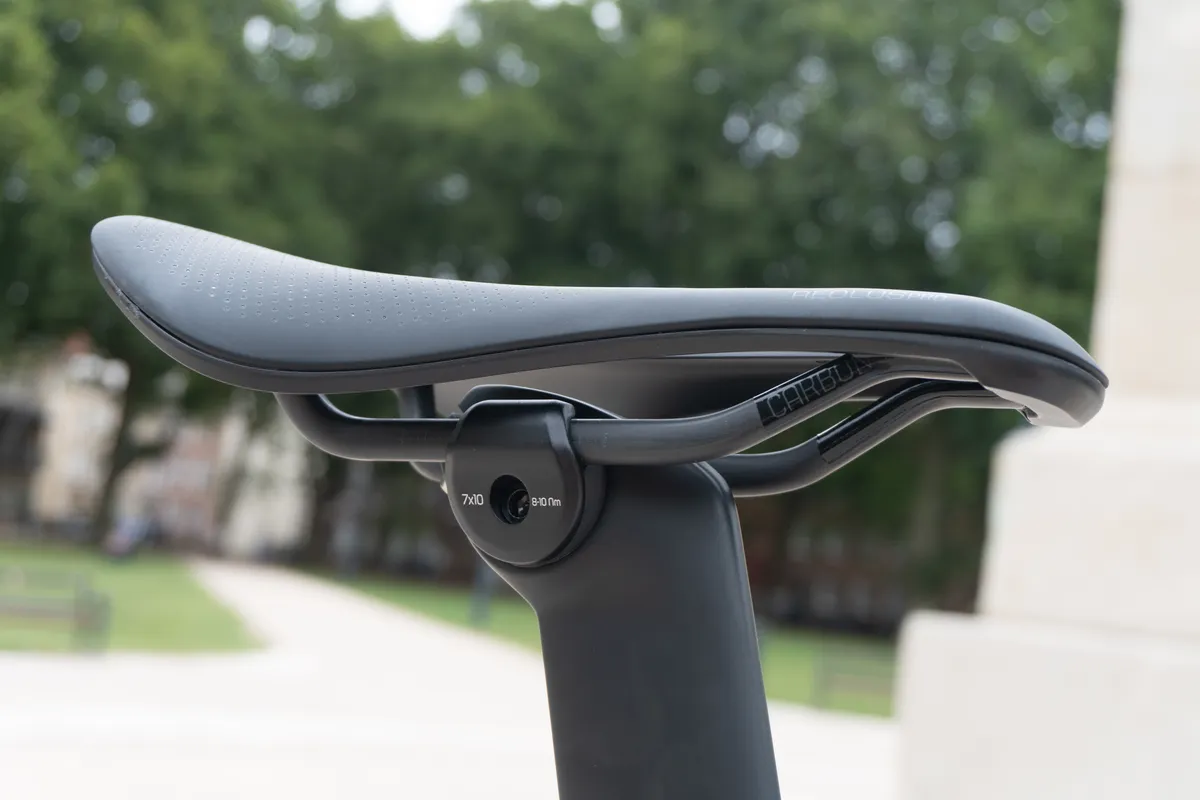
The saddle is an Aeolus P2 RSL model, complete with carbon rails. It’s a little traditional in its length – slightly shorter than my usual chosen perch (a Fizik Antares Versus Evo), but features a visibly long nose when compared to the latest short-nosed saddles of the day.
That being said, I found I got on with it well. Saddles are always a subjective matter – the padding is a little rigid for me, but the shaping is well-considered and allows for a deeper aero tuck or for sitting up on the tops on the climb.
The saddle fits on top of a proprietary aero seatpost (on which, incidentally, Trek says can fit a Bontrager Blendr light). It’s a wedge-style fitment that includes a ‘tail’ assembly to offer further support when the saddle is set in a higher position – compensating for the lack of length in the post and seat tube that comes with the IsoFlow design.
It’s a little more complicated than a standard wedge-fastened seatpost mount to set up (and doesn’t require any carbon assembly paste), but this will be done for you in Trek stores or by one of Trek’s dealers. Home adjustment is easy and I’ve not encountered any slippage or creaking niggles in testing.
And finally…
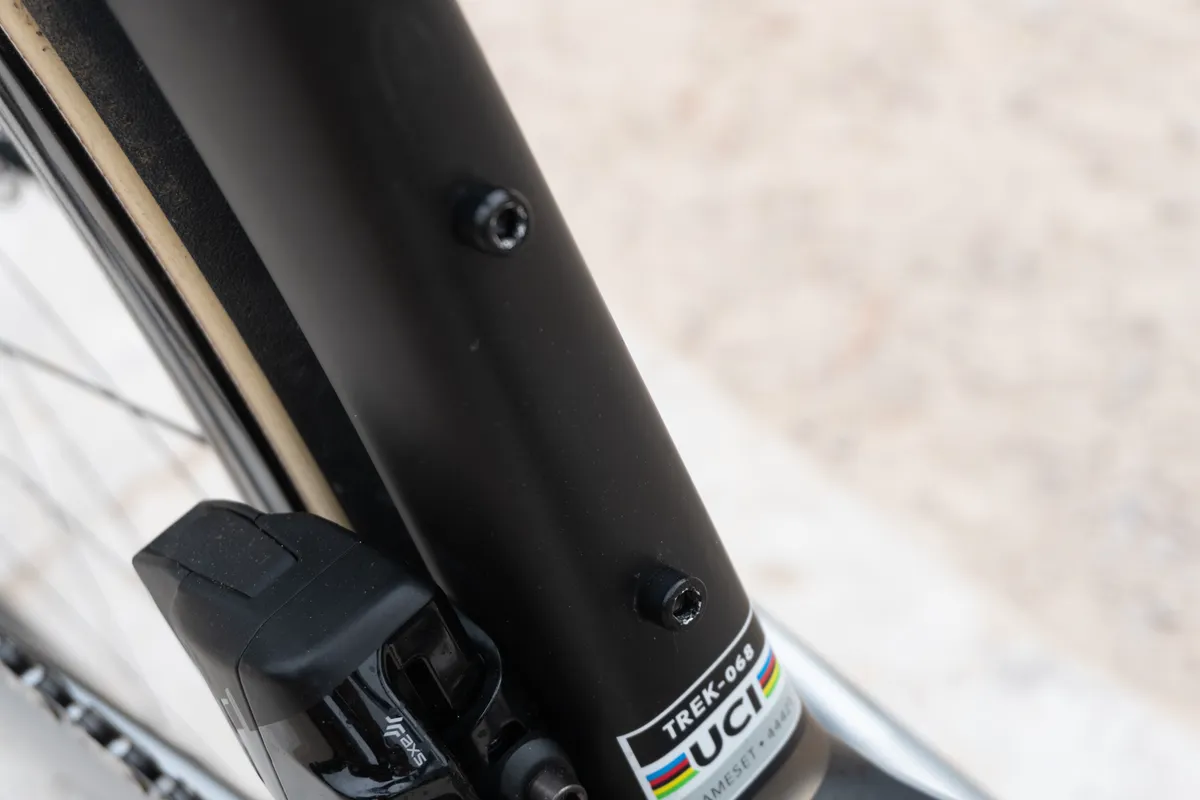
On the point of adjustment, owners may wish to adjust the bolts fastening the out-front mount and bottle cages to the frame.
Often a forgotten detail, I found the bolts and/or the frame recesses appeared to be just slightly out of sync with one another on my test Madone SLR. Each time I needed to set up and move around my bottle cages (or attach the supplied Blendr adaptor to the handlebar), I found myself cringing as I turned the bolts, always feeling as if I might be cross-threading them.
Although many will fit and forget their chosen setup, only needing to tighten the bolts once in a while, a bike that costs upwards of £13,800 / €14,999 / $13,199 / AU$17,999 should have smoother-fitting bolts and bosses.
I also found the black anodisation on the bolts was easily worn away to the silver base colour, thanks to a shallow (and therefore less secure) recess that meant I’d often pull the tool out while turning it, rather than get a flush and secure interface.
At this price – and on any cheaper models in the Madone SLR range, for that matter – I would expect perfection in details such as this.
Trek Madone SLR 9 eTap (2023) groupset, wheels and tyres
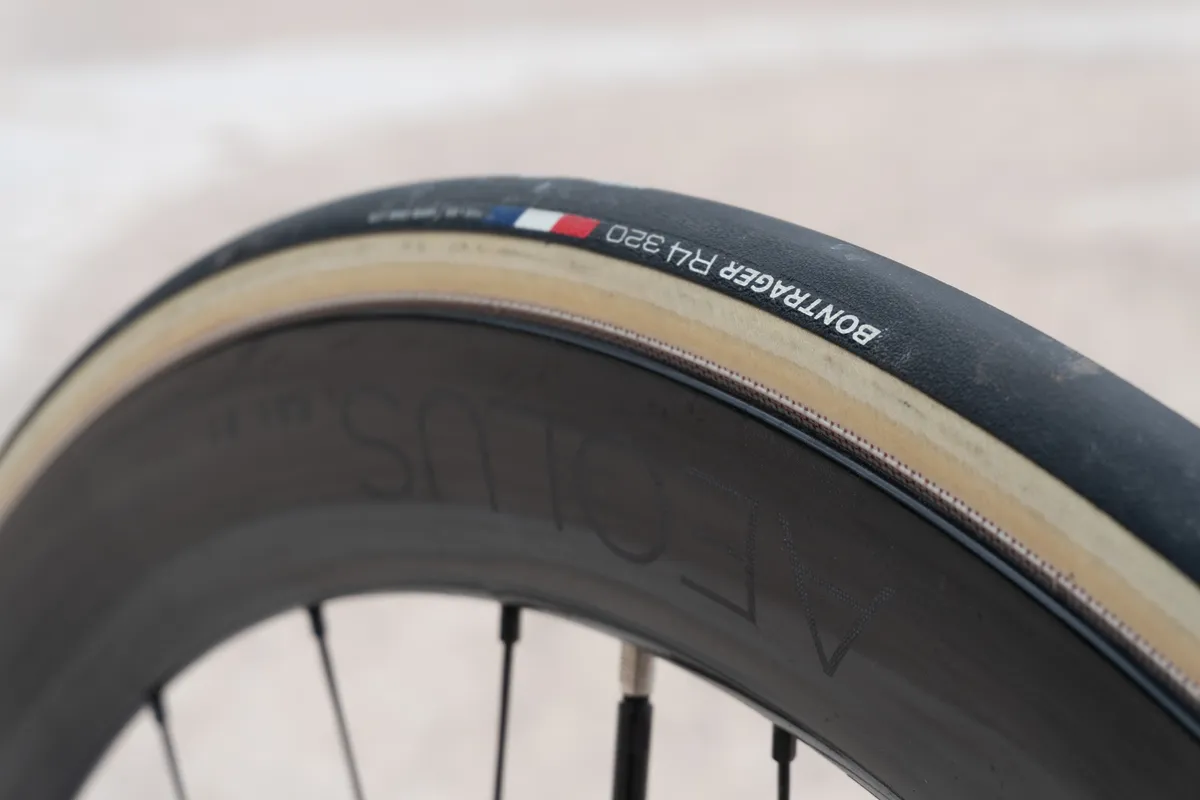
At this price point, as you would hope, no expense is spared from Trek’s stable of available components.
In-house brand Bontrager supplies its Aeolus RSL 51 wheels. The hoops are Bontrager’s top-level offering, are tubeless-ready, feature DT Swiss’ excellent 240 EXP hubs, and have proven to be satisfyingly fast in virtually all conditions.
The rims feature a slight V-shape profile, with a sharper rim edge than some more blunted aero wheelsets. As I’ve already mentioned, I think this lends the wheels a slight sensitivity in crosswinds.
Certainly, my line has been disturbed more on these wheels than many I’ve encountered in the new-age, round-is-fast world.
But they are light at 1,410g a set (claimed), with little to hold you back when accelerating and powering up over a steep rise. Pick-up and engagement is direct and sharp, and once a few hundred kilometres were under my belt, the freehub sound was strong and deep without being overly shouty.
If I could make one change to the overall build of the Madone SLR, it would be the tyres.
Bontrager’s R4 320 clincher rubber offers good suppleness, good grip, and no real shortcoming in detectable rolling speed. They aren’t tubeless-ready.
Personally, I can take or leave tubeless tyres, but there’s no doubt the tech has its groundswell of support on the road, and for many good reasons. However, they are 25c, measuring out at closer to 27mm at 76 to 80psi (front-rear) on the very wide (23mm internal, 31mm external) Aeolus rims.
It’s all within ETRTO recommendations, but by fitting at least 28c tyres, the Madone SLR would surely benefit from the greater comfort the increased volume would provide while running lower pressures. Many would argue there are speed dividends to be had too.
With the loss of IsoSpeed in favour of IsoFlow, the Madone SLR has lost a little built-in compliance with it. For the everyday rider this side of a dedicated racer who wants an aero bike they can enjoy for long rides, wider tyres (however you choose to set them up) make absolute sense.
Trek says the Madone SLR officially fits up to 28c tyres, although we’ve seen Trek-Segafredo pros ride at the Tour de France on 28c Pirelli P-Zero Race TLRs that measure up to almost 30mm wide on similarly profiled Bontrager rims.
It’s worth noting that compared to this year’s stable of new aero bikes – the Scott Foil RC, Cervelo S5 and Giant Propel – the Madone SLR features the lowest official tyre clearance of any (the S5 can accept up to 34c rubber). Pinarello’s Dogma F, updated last year, remains 28c.
Trek Madone SLR 9 eTap (2023) bottom line
The Madone SLR has put many smiles on my face during my stint with it, and it has shown sharp teeth as an out-and-out aero bike that will appeal firstly to racers, but also to those with a penchant for aggressive, pacy riding of varying distances.
All-round, I agree with Trek’s claim that the Madone SLR is likely to be the fastest bike it makes for most of its target riders. I also applaud it for thinking differently and developing its IsoFlow tech – for me, it improves the bike for its designated primary purpose with little downside.
There’s no getting away from the cost. It’s an eye-wateringly expensive bike, and there are rivals launched this year that undercut it on price significantly. It also carries flaws in its tyre spec, which would be a niggle on a mid-range bike, but are a shame here.
Overall, though, the Madone is a mightily impressive bike to ride, in virtually every situation you could want to challenge it with. For that, it’s a real competitor against the latest aero race bikes.
Product
| Brand | trek |
| Price | 17999.00 AUD,14999.00 EUR,13800.00 GBP,13199.00 USD |
| Weight | 7.2900, KILOGRAM (56cm) - Without Bontrager Blendr out-front mount (supplied with all Madone SLRs) |
Features
| Fork | Madone KVF full carbon |
| br_stem | Madone integrated bar stem |
| br_chain | SRAM Red |
| br_frame | Madone SLR |
| Tyres | Bontrager R4 320 700x25c |
| br_brakes | SRAM Red |
| br_cranks | SRAM Red |
| br_saddle | Bontrager Aeolus Pro P2 RSL |
| br_wheels | Bontrager Aeolus RSL 51 |
| br_shifter | SRAM Red eTap AXS |
| br_cassette | SRAM Red |
| br_seatpost | Madone Aero |
| br_gripsTape | Bontrager Supertack Perf tape |
| br_handlebar | Madone integrated bar stem |
| br_bottomBracket | T47 threaded |
| br_availableSizes | 47, 50, 52, 54, 56, 58, 60, 62cm |
| br_rearDerailleur | SRAM Red eTap AXS |
| br_frontDerailleur | SRAM Red eTap AXS |
